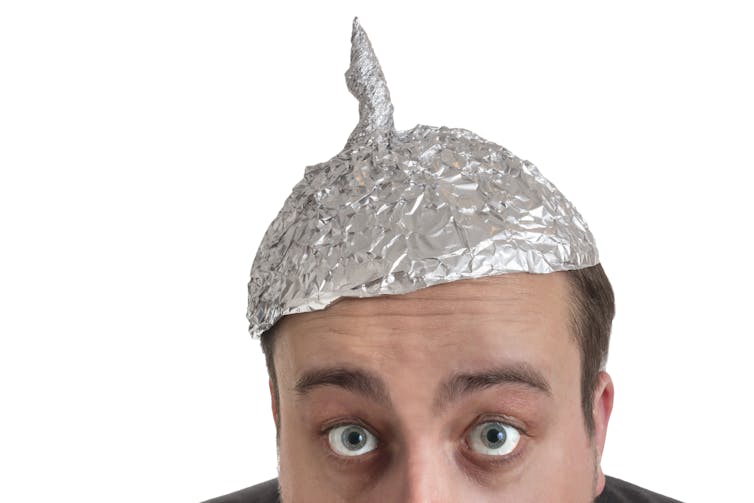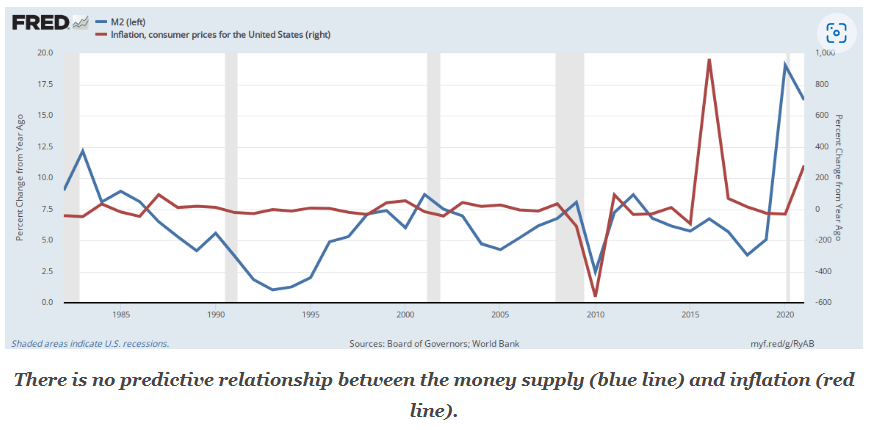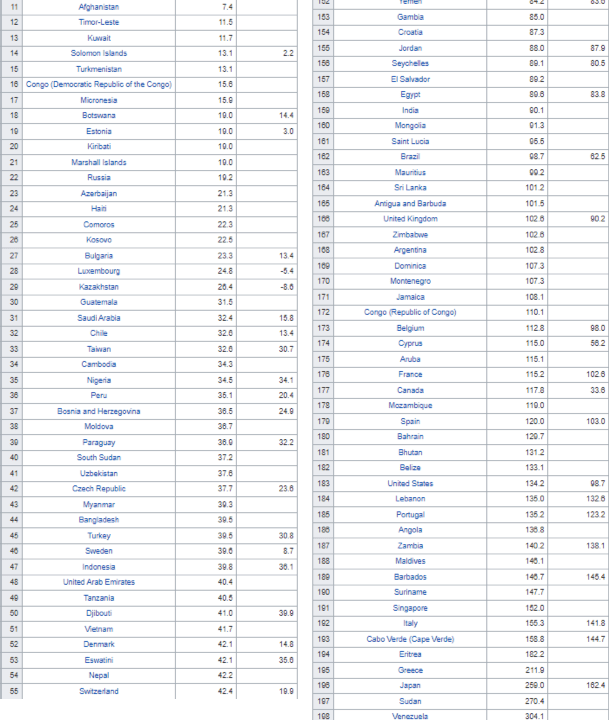BACKGROUND
Those of us who are not addled laugh at those who believe the conspiracy rantings of QAnon, Alex Jones, and numerous others of like ilk.
The Holocaust never happened. Princess Dianne was murdered.
The Sandy Hook mass shooting was fiction.
Hillary Clinton runs a sex ring.
Donald Trump was cheated out of the election.
Hundreds, perhaps even thousands, of these nonsense stories float and are believed by many.
The latter, the Donald Trump lie, fathered a mush-brained attempt to overthrow the U.S. government by people who incredibly thought they were being patriots by violently breaking into Congress.
Such is the mind of the believer.
One commonality among Conspiracy Theories (CT) is that facts don’t matter. You might think that a demonstration of counter-facts would show even the least intelligent that a CT is utter nonsense. The opposite happens.
The demonstration of counter-facts “proves” in the believers’ minds that the CT must be true, and the facts only show how some unknown “they” are hiding the truth.
We’ll begin this exposition by giving you the facts, of which there essentially is one: The U.S. federal government, being Monetarily Sovereign, has 100% control over the U.S. dollar. Neither the federal government nor any of its agencies can run short of dollars.
The government has absolute control over the value and the supply of dollars. Even if the federal government collected $0 taxes, it could keep spending forever. For that reason, the federal government does not borrow dollars.
(The primary effect of federal taxes is to control the economy. Taxes discourage what the government wishes to discourage, and tax breaks encourage what the government wishes to encourage. Unlike state/local taxes, federal taxes do not provide the federal government with spending money.)
Despite repeated mischaracterizations, T-bills, T-notes, and T-bonds do not represent borrowing. They represent deposits into Treasury Security accounts, the purpose of which is to stabilize the dollar. Who says so:
Alan Greenspan: “A government cannot become insolvent with respect to obligations in its own currency.”
Ben Bernanke: “The U.S. government has a technology, called a printing press (or, today, its electronic equivalent), that allows it to produce as many U.S. dollars as it wishes at essentially no cost.”
Ben Bernanke when he was on 60 Minutes: Scott Pelley: Is that tax money that the Fed is spending? Ben Bernanke: It’s not tax money… We simply use the computer to mark up the size of the account.
Statement from the St. Louis Fed: “As the sole manufacturer of dollars, whose debt is denominated in dollars, the U.S. government can never become insolvent, i.e., unable to pay its bills. In this sense, the government is not dependent on credit markets to remain operational.”
That means the government’s so-called “borrowing” does not help the government spend. The European Central Bank, which also is Monetarily Sovereign, agrees.
Press Conference: Mario Draghi, President of the ECB, 9 January 2014 Question: I am wondering: can the ECB ever run out of money? Mario Draghi: Technically, no. We cannot run out of money.
I have never met anyone who believes the U.S. government can run short of its sovereign currency. In that vein, the usual reply to questions is, “It always can print more.”
The response is not 100% true — the government does create dollars but does not print them. It prints dollar bills- receipts for dollars, not dollars themselves- but the federal government’s infinite dollar creation ability is correct.
Unlike state and local governments, the federal government pays all its bills by creating new dollars, which it has the infinite ability to do.
O.K., here they are:
THE TWO MOST PERVASIVE, HARMFUL CONSPIRACY THEORIES.
THEORY I. Federal spending causes inflation. We have discussed this here, here, and elsewhere. The federal spending/inflation myth has two rationales.
- Pumping money into the economy increases the supply of money. When you increase the supply of anything, without increasing the demand, the value of that thing goes down. When the value of money goes down that is inflation.
- When people have more money to spend, they will increase their spending, which increases the demand for goods and services. Increased demand without an increase in supply causes prices to rise, i.e. inflation.
Both those rationales are based on faulty logic.
The first assumes increased federal spending does not increase the demand for dollars. The second assumes increased federal spending does not increase the supply of goods and services. Both are wrong.
Increased federal spending provides growth dollars to manufacturers and suppliers, which invest those dollars to increase the supply of goods and services.
When people begin to purchase items that are not necessities, this increases the demand for and prices of all goods and services. Increased federal spending also provides more dollars for previously unaffordable spending, especially for larger ticket items and luxuries. The result:  THEORY II. Federal Spending is Unsustainable. For this, we turn to our favorite conspiracy theorist:
THEORY II. Federal Spending is Unsustainable. For this, we turn to our favorite conspiracy theorist:
The following is a statement from Maya MacGuineas, president of the Committee for a Responsible Federal Budget (CRFB):
Inflation is surging, interest rates are rising, and debt is growing unsustainably. It is well past time for policymakers to work together to get our fiscal house in order.
The thing commonly called federal “debt” is not a debt or borrowing in the usual sense.
When someone borrows or accrues debt, the purpose is to use the borrowed dollars for spending. But federal “debt” is not something used for spending.
It is the total of dollars deposited into T-security accounts. These accounts resemble safe-deposit boxes in that the holder (the government) never touches the contents, which are owned by the depositor.
T-security accounts give people (and nations) a safe, interest-paying place to store unused dollars. This safety and interest payments help stabilize the value of the dollar.
The government creates new dollars to pay all its bills; it never uses the dollars owned by T-security account holders. It merely holds them, occasionally adding interest to them, and upon maturity, the government sends the dollars back to the owners.
Even under CBO’s outdated economic assumptions and current law policy assumptions, debt will hit a new record in 2031 and rise to an unprecedented 185 percent of GDP in 30 years. We’re entering uncharted territory.
That relationship, Debt/GDP, often falsely is used as a measure of the federal government’s ability to pay off its so-called “debt.”
The assumption is that the higher the ratio, the more difficulty the government has in paying its debt. It is a fale assumption.
“Debt” is deposits into T-security accounts. GDP is total spending in the U.S. by the government, the private sector, and those who import U.S. goods and services. The two figures are not related or comparable.
Worse than an apples/oranges comparison, the Debt/GDP ratio is a monkeys/monkey wrenches comparison: Two unrelated numbers. The federal government pays its debts by creating new dollars, not by raiding T-security accounts.
The evidence that federal “debt” has nothing to do with fiscal health can be seen in the following table. You might expect the nations with the lowest ratio to be the healthiest. Not so. Here are the highs and the lows:

There sits Japan with a 259.0% ratio and the U.S. with a 134.2% ratio. Compare them to Afghanistan, Haiti, Russia, and Myanmar, which have low ratios.
Which are the healthier economies? Which are less likely to default on their financial obligations? There is no financial meaning to the oft-quoted Debt/GDP ratio. It by itself is a conspiracy theory.
Debt scare mongers have been crying wolf about the federal “debt” since at least 1940 perhaps longer, when they called it a “ticking time bomb.”
Over 80 years of ticking and it still has not exploded.
Rising interest rates are fanning the flames of this already dangerous situation. Assuming relatively low rates, interest will hit a record 3.3 percent of GDP by 2032 and more than double that record by 2052.
Again, interest as a percentage of GDP is meaningless, a number that is supposed to scare you. But, rising interest rates are not the result of increased federal spending. They are the Fed’s intentional, though wrongheaded, attempt to cure inflation.
By 2049, interest will be the single largest federal government expenditure, and in combination with health and retirement spending it will make up nearly three-quarters of the budget by 2052.
Translation: By 2049, interest payments will pump more growth dollars into the economy than will any other government expenditure.
The federal government has infinite dollars. The private sector (also known as “the economy”) needs growth dollars. Federal interest payments are affordable for the government and stimulative for the economy.
If interest rates follow CBO’s higher interest rate path, debt would reach 235 percent of GDP. And if policy followed CBO’s costly alternative scenario, debt would increase to 262 percent of GDP by 2052.
Again, the DEBT/GDP ratio is meaningless.
All this is a reminder to those who argued we should amp up our borrowing in years past because rates would always remain low that this was a dangerous bet with real consequences.
“Borrowing” means deposits into T-security accounts. The federal government can spend infinite dollars and never “borrows.” Remember what the Fed said, “. . . the government is not dependent on credit markets to remain operational.”
Today’s outlook is all the more reason we need a deficit-reducing reconciliation package focused on generating budgetary savings and controlling inflation.
We need to take action today, before debt and interest costs spiral out of control.
So-called “debt” and interest costs never are out of control for a Monetarily Sovereign entity. They are under total Federal control, whether or not there is inflation, deflation, growth, recession, or depression.
Deficit reduction does nothing to help the federal government but deficit reduction harms the economy.

The conspiracy theory repeatedly espoused by the CRFB and others of that ilk can be stated simply: “Federal finances are like private sector (including state/local government) finances.”
But federal finances are nothing like private sector finances.
- The federal government is Monetarily Sovereign. We people and our states, counties, and cities are monetarily non-sovereign.
- The federal government is the infinite creator of dollars. We are finite users of dollars.
- The federal government writes the laws regarding dollars. We obey the laws regarding dollars.
- The federal government cannot run short of dollars. We can, and often do, run short of dollars.
- The federal government never borrows. We often borrow.
- The federal government needs no income. We need income in order to spend.
- The federal government arbitrarily creates interest rates. We use the interest rates that exist.
- The federal government spends to acquire goods and services and to grow the economy. We spend only to acquire goods and services.
- Even wasteful federal spending is economically stimulative. Our wasteful spending merely is wasteful.
Every conspiracy theory requires three things:
- A story
- Conspirators
- A purpose.
The story: Federal finances are like private sector finances.
The conspirators: The people, the CRFB, the media, the university economists, and the politicians.
The purpose: Multiple purposes. Many people spread the story out of ignorance. They’ve heard it so many times they’ve come to believe it. And it sounds so logical
Why does the CRFB so avidly promote the theory that federal finances are like private sector finances? They have the same motive as the media, the university professors, and the politicians. They all are bribed by the very rich.
The rich, who run America, always want to be richer. They become richer by widening the income/wealth/power Gap below them. Were it not for the Gap, no one would be rich. We all would be the same.
So the rich bribe the CRFB et al. via contributions. The rich bribe the media via advertising dollars and ownership of media. Politicians are bribed via campaign contributions and promises of employment after they leave office. University professors and other economists are bribed via endowments to universities and jobs in think tanks.
Almost all your sources of information have been bribed by the rich.
To widen the Gap, your information sources convince you not to ask for government benefits.
So you accept, with only minimum complaint, the levying of the unnecessary FICA tax, which hits you much harder than the rich. It is applied only to salaries, not to other forms of income favored by the rich. And, it stops at about $140K salary, a pittance for the rich.
You accept the increases in Social Security’s qualification ages when the government easily could begin Social Security at age 0.
You accept that Medicare is mainly for the elderly when the federal government easily could provide free Medicare to every man, woman, and child in America.
You accept that Medicare pays only 80% of costs, forcing you to pay the rest or spend money on supplementary insurance.
You accept that there are tax breaks for the rich that you didn’t even know existed — tax breaks that allow billionaires to pay lower taxes than you do.
You accept that there are tax breaks for corporations that allow them to write off every expense, while your write-offs are not only negligible but actually are limited by a “standard deduction.” (You are pleased that the standard deduction goes up because of inflation when it is an increasing limit.)
You accept that you not only must pay income taxes but also spend your time and money computing your income tax when the federal government destroys every penny of taxes you send them.
Finally, you not only accept the Gap-widening, but you are so indoctrinated that you angrily defend it if anyone brings it to your attention. You have become an active participant in spreading the conspiracy theory. And your friends spread it. And their friends spread it.
And now, it has become so embedded into your belief system no one even questions the idea that the federal debt and deficit are too large, or the government can’t afford Medicare for All, or taxes must be increased lest Social Security becomes insolvent. 
If you listen closely, you will hear the rich laughing at you as you forget or refuse to believe what you just have read or even promulgate it.
Perhaps, you just feel helpless, that you are a voice in the wind, so what is the use to complaining?
But if enough people contact their representatives again and again, eventually, those voices become the wind that blows away the conspiracy.
———————/////——————–
[No rational person would take dollars from the economy and give them to a federal government that has the infinite ability to create dollars.]
Rodger Malcolm Mitchell
Monetary Sovereignty
Twitter: @rodgermitchell Search #monetarysovereignty
Facebook: Rodger Malcolm Mitchell
……………………………………………………………………..
THE SOLE PURPOSE OF GOVERNMENT IS TO IMPROVE AND PROTECT THE LIVES OF THE PEOPLE.
The most important problems in economics involve:
- Monetary Sovereignty describes money creation and destruction.
- Gap Psychology describes the common desire to distance oneself from those “below” in any socio-economic ranking, and to come nearer those “above.” The socio-economic distance is referred to as “The Gap.”
Wide Gaps negatively affect poverty, health and longevity, education, housing, law and crime, war, leadership, ownership, bigotry, supply and demand, taxation, GDP, international relations, scientific advancement, the environment, human motivation and well-being, and virtually every other issue in economics. Implementation of Monetary Sovereignty and The Ten Steps To Prosperity can grow the economy and narrow the Gaps: Ten Steps To Prosperity:
- Eliminate FICA
- Federally funded Medicare — parts A, B & D, plus long-term care — for everyone
- Social Security for all
- Free education (including post-grad) for everyone
- Salary for attending school
- Eliminate federal taxes on business
- Increase the standard income tax deduction, annually.
- Tax the very rich (the “.1%”) more, with higher progressive tax rates on all forms of income.
- Federal ownership of all banks
- Increase federal spending on the myriad initiatives that benefit America’s 99.9%
The Ten Steps will grow the economy and narrow the income/wealth/power Gap between the rich and the rest.
MONETARY SOVEREIGNTY
You are a complete disaster!
Have you ever actually done anything in life, business, building a home, not buying, construct anything other than word strings? Can you grow your food or do ANYTHING outside a city?
Dude!
Your a fool’s fool!
Please continue your vaccination program!
Learn what truth is! You display for all to see, that you know not!
LikeLike
Thanks for the laugh. Much appreciated.
LikeLike
Hi Rodger,
So more confusion about spending. I think it’s a pipe dream that writing to your representatives will sort it out. This has to come from people like you getting other business people to form a lobby and present a coherent argument to people in Federal gov that can actually do something.
And now Manchin wants to give 300 billion to the federal gov for reducing the debt which will lower interest payments! OMG.:)
https://www.npr.org/2022/07/27/1114108340/manchin-deal-inflation-reduction-act
BERNANKE: Well, this fear of inflation, I think is way overstated. We’ve looked at it very, very carefully. We’ve analyzed it every which way. One myth that’s out there is that what we’re doing is printing money. We’re not printing money. The amount of currency in circulation is not changing. The money supply is not changing in any significant way. …
Twenty-one months earlier on the same program and to the same reporter, Bernanke said something quite different:
Asked if it’s tax money the Fed is spending, Bernanke said, “It’s not tax money. The banks have accounts with the Fed, much the same way that you have an account in a commercial bank. So, to lend to a bank, we simply use the computer to mark up the size of the account that they have with the Fed. It’s much more akin to printing money than it is to borrowing.”
“You’ve been printing money?” Pelley asked.
“Well, effectively,” Bernanke said. “And we need to do that, because our economy is very weak and inflation is very low. When the economy begins to recover, that will be the time that we need to unwind those programs, raise interest rates, reduce the money supply, and make sure that we have a recovery that does not involve inflation.”
https://www.npr.org/sections/itsallpolitics/2010/12/08/131903366/jon-stewart-busts-fed-s-chair-ben-bernanke-on-printing-money
Thanks, Penny
LikeLike
“The conspirators: The people, the CRFB, the media, the university economists, and the politicians.”
It’s hard to believe there isn’t a chain reaction of MS believers and truth tellers. People march and protest barking up the wrong tree every time. When we start seeing MS marchers, the revolution will begin and the ultra rich conspiracy ends. Crime will also drop drastically.
LikeLike
Has Ron Johnson from Wisconsin yet replied to one of your letters? https://www.msn.com/en-us/money/retirement/sen-johnson-suggests-ending-medicare-social-security-as-mandatory-spending-programs/ar-AA10gvaw?ocid=msedgntp&cvid=e6cb0cb32e7c4fa9af2cba336b0eced4
LikeLike
It may surprise you to learn that I agree with Johnson, but for different reasons. He is a Republican, so his motive is to make it easier to cut benefits. But note the word “easier.” Congress has been cutting SS benefits for years by raising the qualifying age, by taxing SS at the highest rate, and by reducing benefits for working.
All these cuts are made with the phony excuse that the fake trust funds are running short of money. Take away that excuse, and each member of Congress would have to go on record to cut benefits.
Rather than guaranteeing benefits as Roosevelt hoped, those fake trust funds and the FICA tax actually limit benefits.
LikeLike